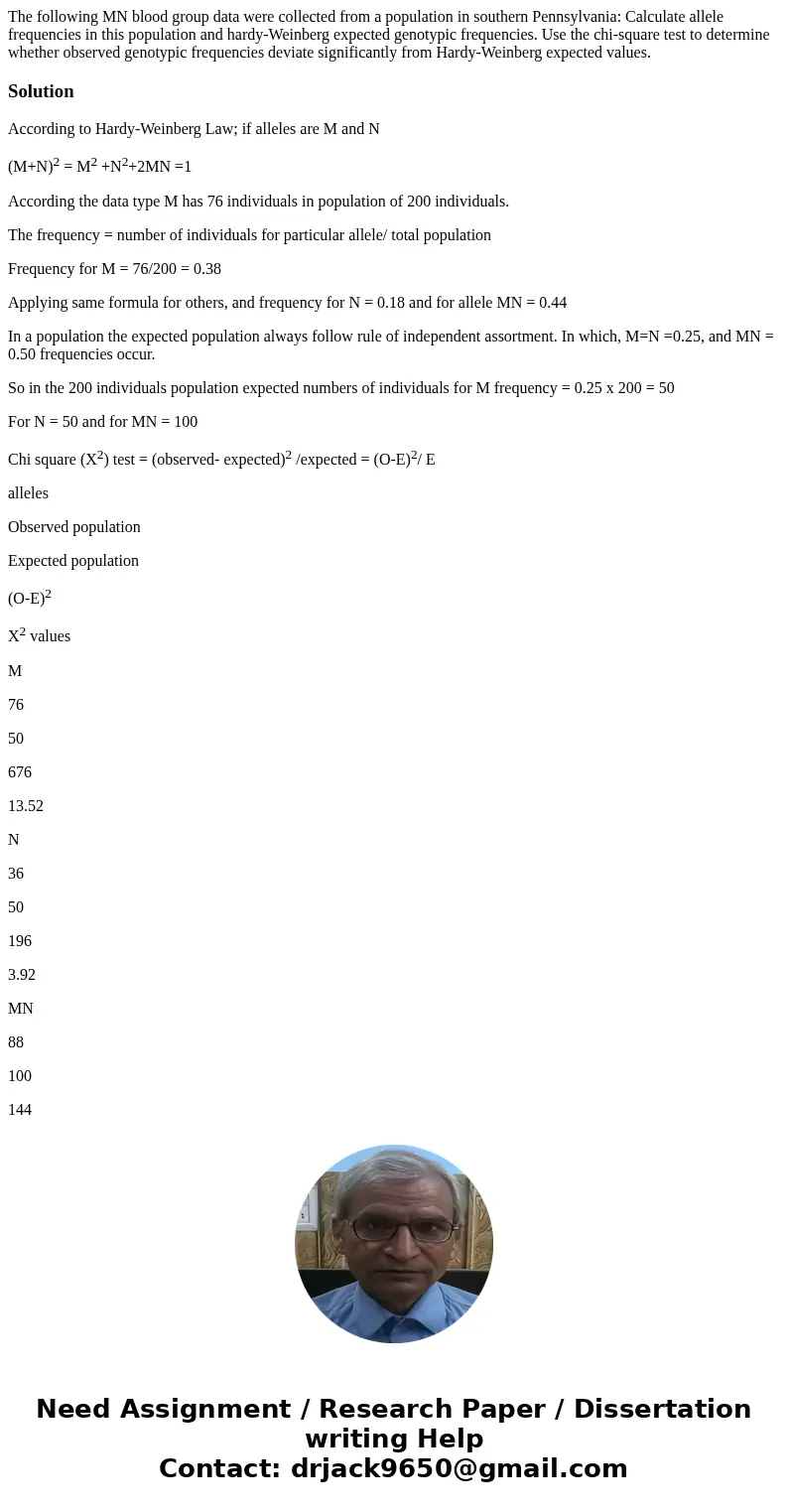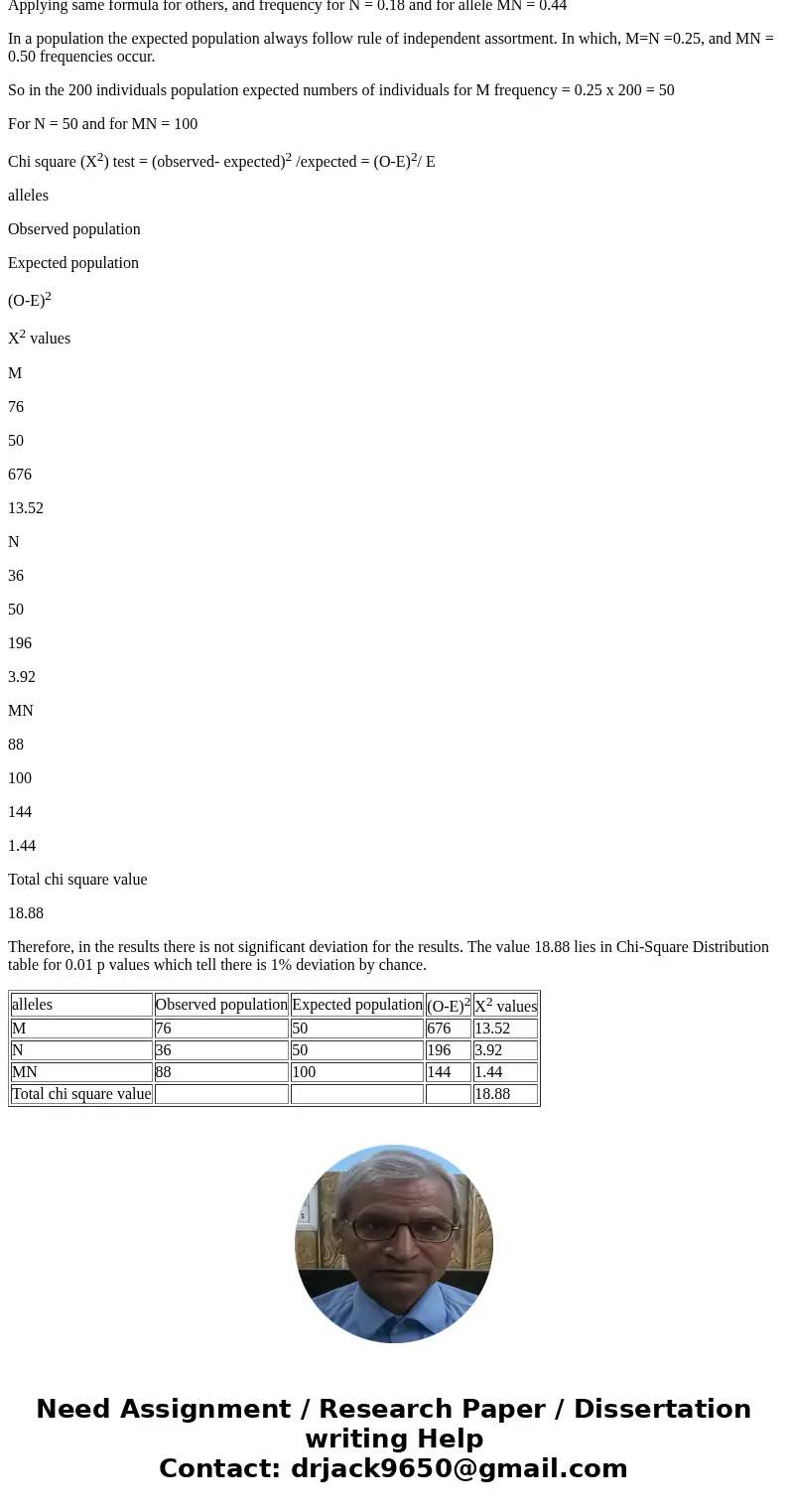The following MN blood group data were collected from a popu
Solution
According to Hardy-Weinberg Law; if alleles are M and N
(M+N)2 = M2 +N2+2MN =1
According the data type M has 76 individuals in population of 200 individuals.
The frequency = number of individuals for particular allele/ total population
Frequency for M = 76/200 = 0.38
Applying same formula for others, and frequency for N = 0.18 and for allele MN = 0.44
In a population the expected population always follow rule of independent assortment. In which, M=N =0.25, and MN = 0.50 frequencies occur.
So in the 200 individuals population expected numbers of individuals for M frequency = 0.25 x 200 = 50
For N = 50 and for MN = 100
Chi square (X2) test = (observed- expected)2 /expected = (O-E)2/ E
alleles
Observed population
Expected population
(O-E)2
X2 values
M
76
50
676
13.52
N
36
50
196
3.92
MN
88
100
144
1.44
Total chi square value
18.88
Therefore, in the results there is not significant deviation for the results. The value 18.88 lies in Chi-Square Distribution table for 0.01 p values which tell there is 1% deviation by chance.
| alleles | Observed population | Expected population | (O-E)2 | X2 values |
| M | 76 | 50 | 676 | 13.52 |
| N | 36 | 50 | 196 | 3.92 |
| MN | 88 | 100 | 144 | 1.44 |
| Total chi square value | 18.88 |


 Homework Sourse
Homework Sourse